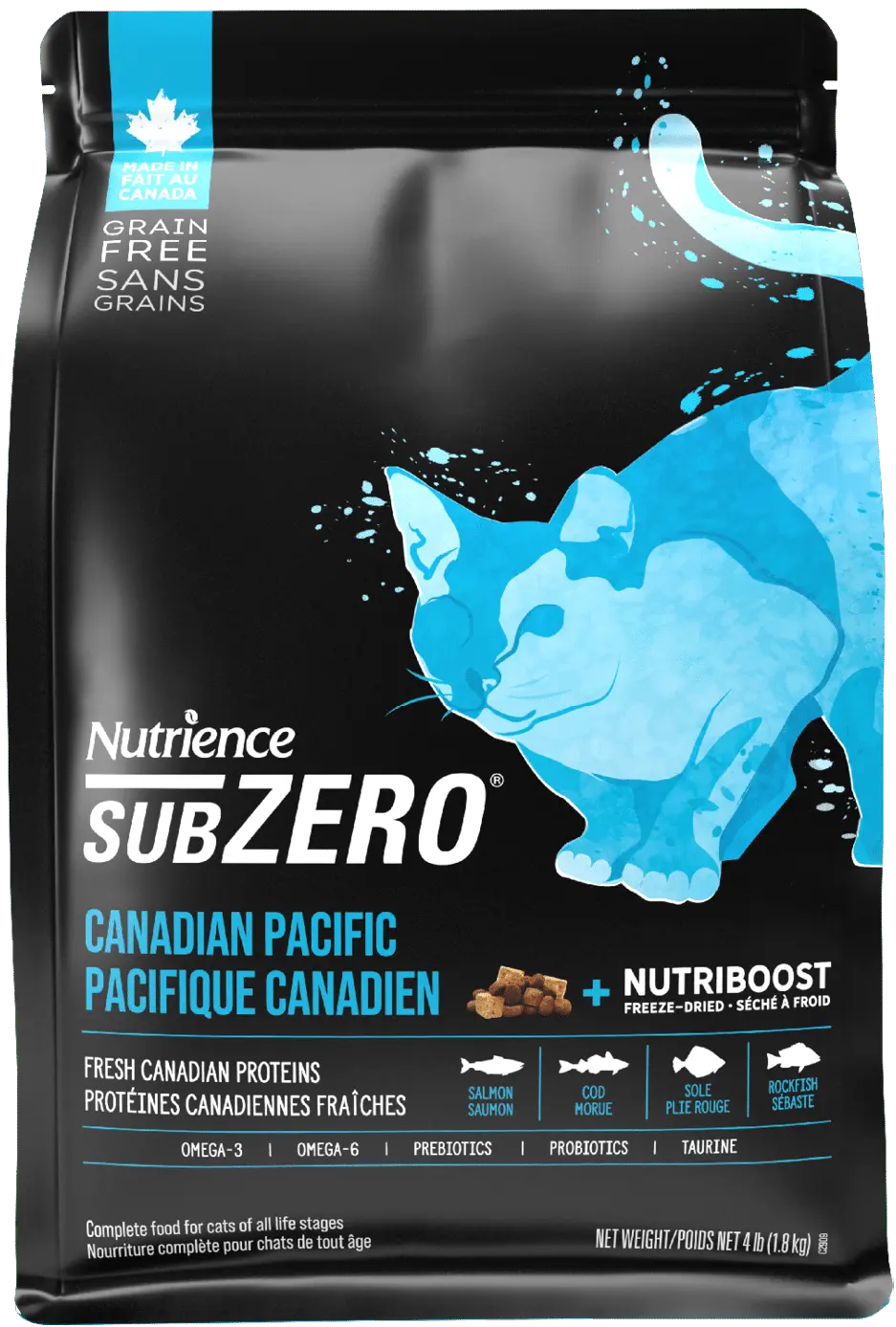Nutrience subZero
Canadian Pacific (ALS)
ALS
Regular
Indoor and Outdoor
Click to reveal the score breakdown
Tap to view ingredients, guaranteed analysis and more
Ingredients
Salmon
Pollock
Cod
Haddock
Flounder
Menhaden
Salmon meal
Herring meal
Menhaden meal
Peas
and also:
Canola oil (preserved with mixed tocopherols), Lentils, Natural fish flavour, Sweet potatoes, Sun-cured alfalfa meal, Freeze-dried salmon, Freeze-dried herring, Freeze-dried pumpkin, Freeze-dried green mussels, Freeze-dried cod liver,, Freeze-dried kelp,, Egg product, Salmon oil, Herring oil, Choline chloride, Coconut oil, DL-methionine, Potassium chloride, Lecithin, Calcium propionate, L-lysine, Taurine, Pumpkin, Butternut squash,, Carrots, Spinach, Broccoli, Apples, Blueberries, Cranberries, Pomegranate, Ginger, Peppermint leaf, Licorice root, Turmeric, Salt, Vitamin E supplement, Vitamin A supplement, Niacin, Calcium pantothenate, Riboflavin, Pyridoxine hydrochloride, Thiamine mononitrate, Biotin, Vitamin B12 supplement, Vitamin D3 supplement, Folic acid, Yucca shidigera extract, Yeast extract, (zinc oxide, Zinc proteinate, Iron proteinate, Ferrous sulfate, Copper proteinate, Copper sulfate, Manganese proteinate, Manganous oxide, Calcium iodate, Sodium selenite, Glucosamine hydrochloride, Dried kelp, Dried chicory root, Chondroitin sulfate, Rosemary extract, L-carnitine, Dried Lactobacillus acidophilus fermentation product, Dried Lactobacillus casei fermentation product, Dried Bifidobacterium bifidum fermentation product, Dried Enterococcus faecium fermentation product
Notes
The score is calculated after relocation of fresh meat or fish ingredient(s) as explained in the calculation rule #7 in Chapter 1.
Comments
Total microorganisms (min) 225,000,000 CFU/lb (L. plantarum, E. faecium, B. subtilis, Bi. animalis, L. casei, L. helveticus, Bi. longum, L. acidophilus in descending amounts)
Guaranteed Analysis
Crude Protein
38%
Crude Fat
18%
Crude Fiber
3.5%
Moisture
10%
Crude Ash
7.5%
Calcium
1.1%
Phosphorus
0.9%
Magnesium
0.1%
Omega 3
1.7%
Omega 6
2.5%
Metabolizable Energy
3855 kcal/kg
Notes
The score is calculated after relocation of fresh meat or fish ingredient(s) as explained in the calculation rule #7 in Chapter 1.
Comments
Total microorganisms (min) 225,000,000 CFU/lb (L. plantarum, E. faecium, B. subtilis, Bi. animalis, L. casei, L. helveticus, Bi. longum, L. acidophilus in descending amounts)
Product last updated: May 22, 2024, 6:34 AM
Please hold on while we’re getting the best offers for you
6982






